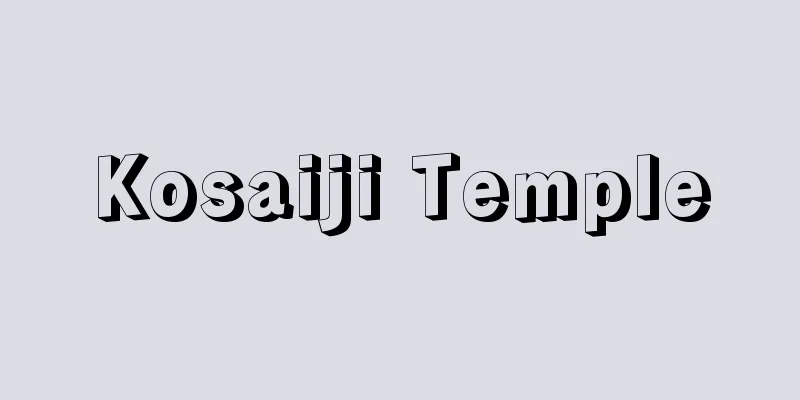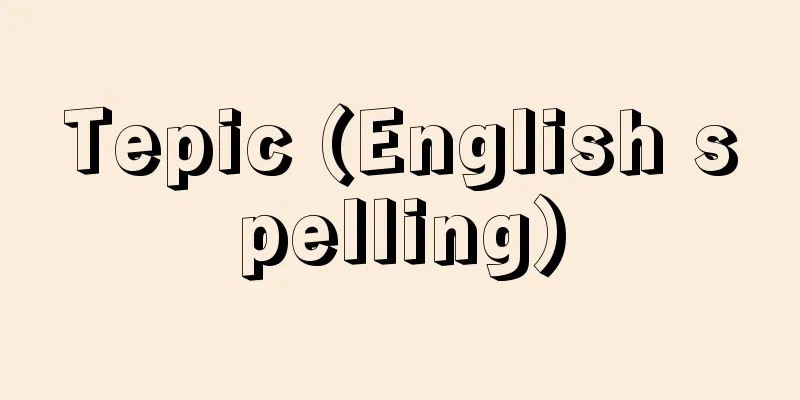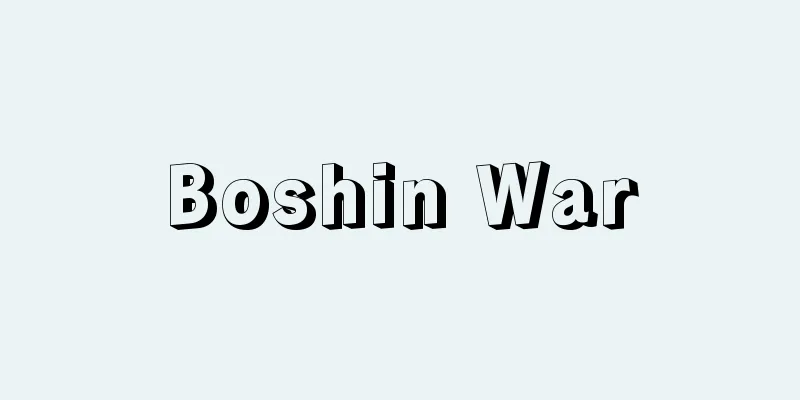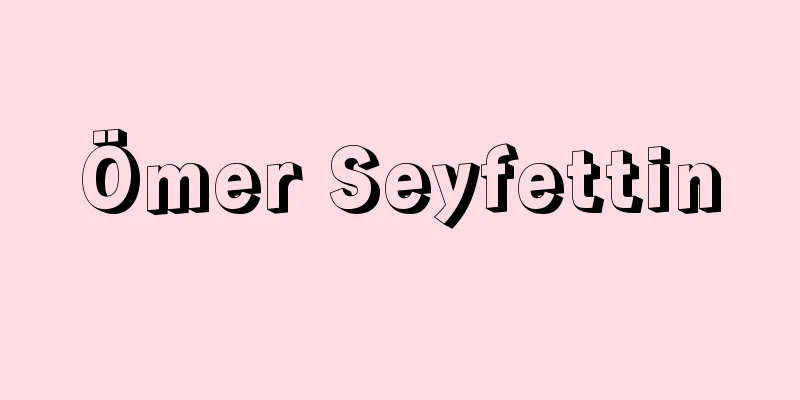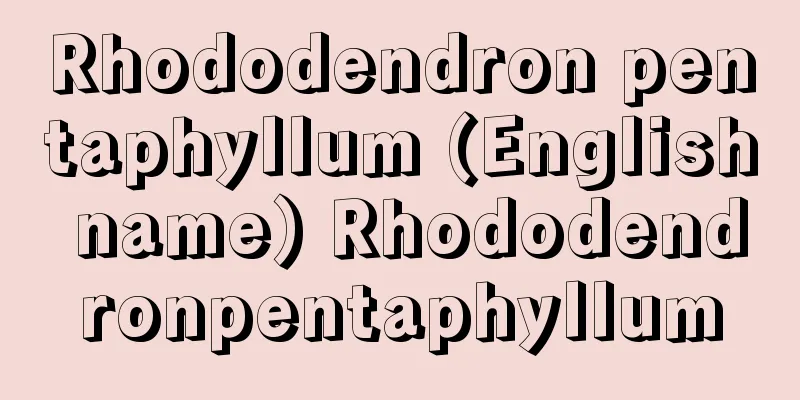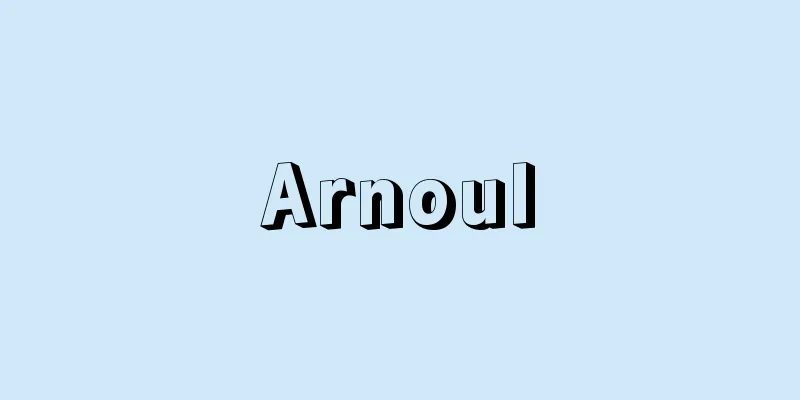Child welfare
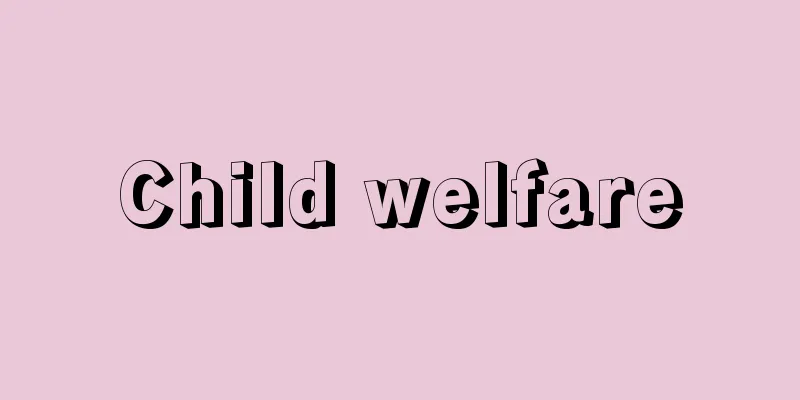
Definition of Child WelfareIt is a system of social policy institutions that emerged at a certain stage of development in modern capitalist society and saw full-scale development with the establishment of the welfare state system after World War II, with the idea of responding to the various difficulties and obstacles (child problems) that arise in relation to children's lives and development in relation to the economy, politics, culture, education, environment, etc. of society, and guaranteeing a better life and development for children as an inherent right. In recent years, it has also been called "child and family welfare" or "child and family welfare." [Takashi Nakamura September 19, 2017] The Establishment of "Child Welfare" in JapanThe term "child welfare" first appeared in public in Japan after World War II, in January 1947, in the "Opinion on Child Protection, Centered on the Draft Outline of the Child Protection Law" issued by a subcommittee of the Central Social Work Committee. The opinion stated the following: "Looking at the outline of the Ministry of Health and Welfare's proposal, the scope of those to be protected is primarily juvenile delinquents, juvenile delinquents, and abused children, which means that it does not go beyond the scope of special problem children. Since legislation must be proactive, it is necessary to make the law applicable to all children, rather than limiting it to special children. Therefore, since the purpose and objective of the law is to promote the welfare of ordinary children in a clear and positive sense, it would be better to name the law the Child Welfare Law." In response to this, the Central Social Work Committee submitted a report with a Child Welfare Bill, stating, "In order to thoroughly protect unfortunate homeless children and to actively promote the welfare of children who will carry the fate of our nation in future generations on their shoulders, it is an urgent task to enact a basic law on child welfare, which should also be called the Child Welfare Act." Here, "the fate of our nation" meant progressing as a cultured nation thoroughly committed to democracy, and "welfare" meant health, life, and education. Therefore, child welfare has been understood not only as a preliminary step of providing relief and protection for children, but also as something that guarantees equal health, life, and education for all children. This is clear not only from the general provisions of the Child Welfare Law, but also, more specifically, from the process by which child consultation centers were required to respond to all consultations related to children and child welfare facilities were established so that all infants and toddlers could use nurseries and all juveniles could use child welfare facilities. Furthermore, the meaning can be easily understood from the "Children's Charter" published in 1951 to reemphasize the ideals of the Child Welfare Law. [Takashi Nakamura September 19, 2017] The purpose of child welfarePut simply, the purpose of child welfare is to "guarantee a better life and development for children as an inherent right," as stated in the definition above. Since child welfare is a form of social welfare, in the case of Japan, it is clear that Article 13 (right to pursue happiness) and Article 25 (right to life) of the Japanese Constitution are the legal objectives. In addition, because the target of welfare is children, Article 26 (right to education) of the Constitution is added as an objective. In other words, the objectives of child welfare are composed of three rights: the right to pursue happiness as defined in the Constitution, the right to life, and the right to education. The objective of child welfare is to guarantee the right to live happily, the right to grow up, and the right to be protected as defined in the Constitution, and this is embodied in the Child Welfare Act and other child welfare-related laws. However, one more thing that must be added is the "right to participate." The Convention on the Rights of the Child, adopted by the United Nations in 1989 and ratified by Japan in 1994, requires contracting states to respect four rights: the right to life, the right to grow, the right to be protected, and the right to participate. The right to participate is the right to freely possess, express, and express one's thoughts and wishes, and to gather with others. Under current laws and regulations, the guarantee of children's right to participate is abstract, and this is a challenge that will be required for future child welfare. It should be noted that because childhood is the starting point of life, child welfare is also the starting point of social welfare and has an important meaning in forming its foundation. [Takashi Nakamura September 19, 2017] Targets and subjects of child welfareThe subject of child welfare is child problems. Child problems are various difficulties and obstacles in life that arise in relation to the life and development of children in relation to the economy, politics, culture, education, environment, etc. of society. Problems such as poverty, abandonment, abuse, abortion, murder, labor, and disabilities surrounding children are immediately springing to mind. In terms of the purpose of child welfare, any phenomenon in which the right to live, the right to grow, the right to be protected, and the right to participate are violated can be called a child problem. Furthermore, from among these child problems, those that the main body of child welfare takes up as "problems" can be called child problems in the narrow sense. Even if a child has a "problem" himself, if he does not have the means to solve it, child welfare can take the necessary measures to recognize it as a "problem" on behalf of the child. However, if the main body of child welfare cannot find the "problem," although it is a child problem in the broad sense, it is not a child problem in the narrow sense that can be solved by child welfare measures. In Japan, the main actors in child welfare are guardians, the national government, and local public organizations. The role of guardians is self-evident. The Child Welfare Act stipulates that the national government and local public organizations share the responsibility for raising children "together" with guardians. It is important to note that this does not mean that the guardians' responsibility for raising children takes precedence over public responsibility, and that public responsibility is then exercised ex post facto when they are unable to do so. It is precisely because guardians have a responsibility that it is important for public organizations to proactively support the creation of the necessary conditions to enable them to fully fulfill this responsibility. Furthermore, Article 2 of the Child Welfare Act stipulates that all citizens shall strive to ensure that children are born and raised in good health both physically and mentally. In that sense, all citizens can also be said to be main actors in child welfare. [Takashi Nakamura September 19, 2017] Child Welfare MethodsChild welfare is centered on resolving child problems through laws and systems. In Japan, these laws refer to the Child Welfare Act, Child Allowance Act, Child Support Allowance Act, Act on the Provision of Special Child Support Allowance, Maternal and Child Health Act, Mother and Child, Father and Child, and Widow Welfare Act, Act on the Prevention of Child Abuse, and other laws that guarantee the welfare of children and mothers and children. At the same time, social welfare laws such as the Social Welfare Act, Public Assistance Act, Basic Act for Persons with Disabilities, Welfare Act for Persons with Physical Disabilities, and Welfare Act for Persons with Intellectual Disabilities have been enacted and improved, and further, education-related laws such as the Fundamental Act on Education and School Education Act, as well as related laws such as the Labor Standards Act and Juvenile Act have also been enacted and improved, and efforts have been made to improve the legal system. Institutions responsible for child welfare are the Ministry of Health, Labor and Welfare's Children and Families Bureau and the civil affairs or welfare departments of local governments, which fulfill their administrative responsibilities, while child consultation centers, welfare offices, and health centers, as specialized institutions, play important roles such as investigation and assessment, and admission procedures. In addition, various child welfare facilities are established based on the Child Welfare Act, and child guidance officers, child independence support specialists, children's play instructors (child welfare workers), childcare workers/child life support workers, mother and child support workers, doctors, therapists (physiotherapists, occupational therapists, etc.), public health nurses/midwives/nurses, nutritionists, cooks, and office staff are assigned as needed. Child welfare commissioners, chief child welfare commissioners, probation officers, and school social workers also play important roles in child welfare. [Takashi Nakamura September 19, 2017] Development of the concept of child welfareSince the 1990s, child welfare has often been referred to as "child welfare," "child and family welfare," or "child and family welfare." The first reason for this is that there is no uniformity in the age definition of "child" (Article 1 of the Convention on the Rights of the Child defines "child" as "every person under the age of 18"), and in order to ensure the protection of children's rights, it is said that it would be better to standardize the term "child," which reflects the view of welfare as the subject of rights exercise, rather than the passive meaning of "child" as a person who is protected. Secondly, it is said that in modern society, not only "children" but also their "families" should be the targets of welfare. Thirdly, "child welfare" still has a strong character of poverty relief, charity, and benevolence, and while parents are primarily responsible for raising their children, in modern times, the perspective of respecting children's human rights and ensuring self-actualization has also been added. In the future, it is necessary to develop the concept of child welfare to ensure the protection of children's rights, taking into account the historical background so far, and to create a legal system based on that concept. In June 2016, the "fundamental principles" of Articles 1 and 2 were revised for the first time since the Child Welfare Act came into force. That is, Article 1 clearly states that the law will be in accordance with the spirit of the Convention on the Rights of the Child, stating that "All children have the right to be properly raised, to have their lives guaranteed, to be loved and protected, to have their healthy growth and development in mind and body, and to have their independence promoted, and to have other welfare rights equally guaranteed." The following Article 2, paragraph 1 also clearly states that "All citizens shall endeavor to ensure that children are born in a good environment, that their opinions are respected and their best interests are given priority in all areas of society according to the age and level of development of the child, and that the child is brought up healthy in mind and body." This also clearly states that the spirit of the Convention on the Rights of the Child, that is, respect for the child's opinions and priority for the child's best interests, is respected. However, while retaining the wording stipulated in the old Article 2, "The state and local public entities shall, together with the guardians of children, be responsible for the healthy development of children both physically and mentally," as paragraph 3 of the same article, the new provision in paragraph 2 that "Guardians of children shall be primarily responsible for the healthy development of children both physically and mentally" appears to be a contradiction. [Takashi Nakamura September 19, 2017] "Ichibankase Yasuko (ed.), "Child Welfare Theory" (1974, Yuhikaku)" ▽ "Amino Takehiro, "Child Welfare Studies - An Interdisciplinary Approach to 'Child-Centeredness'" (2002, Chuohoki Publishing)" ▽ "Kikuchi Masaharu, Hosoi Isamu, Kakimoto Makoto, "Child Welfare Theory - New Trends and Basic Perspectives" (2007, Minerva Shobo)" ▽ "Takahashi Shigehiro (ed.), "Child and Family Welfare in Japan - 60 Years of Progress Since the Enactment of the Child Welfare Act" (2007, Akashi Shoten)" ▽ "Asai Haruo (ed.), "Seed Book: Child and Family Welfare" (2011, Kenpakusha)" [References] | | | | | | | Law| | | |Public Health |Source: Shogakukan Encyclopedia Nipponica About Encyclopedia Nipponica Information | Legend |
児童福祉の定義社会の経済、政治、文化、教育、環境などと関連しながら児童の生活と発達にかかわって生み出されてくるさまざまな生活上の困難や障害(児童問題)に対応し、児童のよりよい生活と発達を固有の権利として保障することを理念に、近代資本主義社会の一定の発展段階において登場し、第二次世界大戦後の福祉国家体制の成立とともに本格的な展開をみた社会的方策制度の体系である。近年は「子ども家庭福祉」「児童家庭福祉」などともよばれる。 [中村強士 2017年9月19日] 日本における「児童福祉」の成立日本において「児童福祉」という用語が初めて公の場に登場したのは、第二次世界大戦後、1947年(昭和22)1月の中央社会事業委員会小委員会による「児童保護法要綱案を中心とする児童保護に関する意見書」である。意見書は以下のような内容であった。「厚生省案の要綱をみると、保護対象の範囲は、不良少年、犯罪少年と被虐待児童が主であって、要するに特殊な問題児童の範囲を出ていない。立法にあたっては積極性を与えねばならないから、法の対象を特殊児童に限定することなく、全児童を対象とする必要がある。したがって、法の趣旨目的が一般児童の福祉の増進を図る明朗かつ積極的な意味から、法の名称も児童福祉法とするほうがよい」というものである。これを受けて中央社会事業委員会は、「不幸な浮浪児等の保護の徹底をはかり、すすんで次代のわが国の命運をその双肩に担う児童の福祉を積極的に助長するためには、児童福祉法とも称すべき児童福祉の基本法を制定することが喫緊の要務である」という趣旨の意見を、児童福祉法案を付して答申した。ここで「わが国の命運」とは、民主主義に徹底して文化国家として歩むことであり、「福祉」とは健康をはじめ生活と教育が考えられていた。 したがって、児童福祉は、前段階である児童の救済や保護はもとより、すべての児童に平等に健康や生活、教育を保障するものとして、とらえられてきた。この点は、児童福祉法の総則はもとより、より具体的には、児童相談所が児童にかかわるすべての相談に応じるよう義務設置され、すべての乳幼児が保育所を、すべての少年が児童厚生施設を利用できるよう児童福祉施設が整備された経過からも明らかである。さらに、児童福祉法の理念を再度強調するために1951年に公表された「児童憲章」においても、その意味は容易に理解できよう。 [中村強士 2017年9月19日] 児童福祉の目的端的にいえば、前述した定義のなかにある、「児童のよりよい生活と発達を固有の権利として保障する」ことが児童福祉の目的となる。 児童福祉も社会福祉の一つであるから、日本の場合、日本国憲法第13条(幸福追求権)と第25条(生存権)が法律上の目的となることは明らかである。これに加えて、福祉の対象が児童であることから、憲法第26条(教育権)が目的に加わる。つまり、憲法で定める幸福追求権を中心に生存権と教育権の3権で構成されるのが児童福祉の目的である。児童福祉の目的は、憲法に定める幸せに生きる権利、育つ権利、守られる権利を保障することであり、これを具体化したのが児童福祉法をはじめとする各種児童福祉関係法である。ただし、いま一つ付け加えなければならないのが「参加する権利」である。 1989年に国連で採択され、1994年(平成6)に日本が批准した「子どもの権利条約(児童の権利に関する条約)」では、生きる権利、育つ権利、守られる権利、そして参加する権利の四つの権利を遵守するよう締約国に義務づけている。参加する権利とは、自分の思いや願いを、自由に所持し、表現し、表明し、仲間を集めることのできる権利である。現行法規において、児童の参加する権利の保障は抽象的であり、今後の児童福祉に求められる課題である。なお、児童期は人生の出発点であるがゆえに、児童福祉は社会福祉の出発点でもあり、その土台を形づくる重要な意味をもっていることを付言しておく。 [中村強士 2017年9月19日] 児童福祉の対象と主体児童福祉の対象は児童問題である。児童問題とは、社会の経済、政治、文化、教育、環境などと関連しながら児童の生活と発達にかかわって生み出されてくるさまざまな生活上の困難や障害のことである。児童をめぐる貧困、遺棄、虐待、堕胎、殺害、労働、障害の問題をすぐに思い浮かベることができるだろう。児童福祉の目的にかかわらせていえば、生きる権利、育つ権利、守られる権利、参加する権利が侵害されるあらゆる事象が児童問題といえる。さらには、これらの児童問題から児童福祉の主体が「問題」と取り上げたものが、いわば狭義の児童問題といえる。児童本人が「問題」として抱えていたとしても、これを解決する術をもたない場合、児童福祉はその児童本人にかわって「問題」としてとらえ必要な施策を講じることができる。しかし、児童福祉の主体がその「問題」を発見できなければ、広義の児童問題ではあるものの、児童福祉が必要な施策によって解決しうる狭義の児童問題ではないことになる。 日本の場合、児童福祉の主体は、保護者および国と地方公共団体である。保護者は自明のことである。児童福祉法では、国および地方公共団体は保護者「とともに」児童の育成責任を負うことが定められている。ここで注意すべきは、保護者の養育責任を公的責任に優先させて、これができない場合に事後処理的に公的責任を発揮するというものではないことである。保護者に責任があるからこそ、これが十分に果たせるように必要な条件を積極的に援助する公的責任が重要である。また、児童福祉法の第2条で、すべての国民が児童に対して心身ともに健やかに生まれ、育成されるよう努めることが定められている。その点では、すべての国民もまた児童福祉の主体といえる。 [中村強士 2017年9月19日] 児童福祉の方法児童福祉は、法律や制度によって児童問題を解決することが中心である。日本においてその法律とは、児童福祉法をはじめ、児童手当法、児童扶養手当法、特別児童扶養手当等の支給に関する法律、母子保健法、母子及び父子並びに寡婦福祉法、児童虐待の防止等に関する法律など、児童および母子の福祉を保障する諸法律をさす。それとともに、社会福祉法、生活保護法、障害者基本法、身体障害者福祉法、知的障害者福祉法など社会福祉関係の法律が制定・整備され、さらに、教育基本法、学校教育法をはじめとする教育関係の法律や労働基準法、少年法などの関連法律も制定・整備され、法制面の充実が図られてきた。 児童福祉を担当する機関としては、厚生労働省子ども家庭局、地方公共団体の民生部あるいは福祉部が行政上の責任を果たすとともに、児童相談所、福祉事務所、保健所などが専門機関として、調査判定、入所措置などの重要な役割を果たしている。さらに、児童福祉法に基づいて各種児童福祉施設が設置されるとともに、児童指導員、児童自立支援専門員、児童の遊びを指導する者(児童厚生員)、保育士・児童生活支援員、母子支援員、医師、セラピスト(理学療法士、作業療法士など)、保健師・助産師・看護師、栄養士、調理員、事務員などが必要に応じて配置されている。また、児童委員、主任児童委員、保護司、スクールソーシャルワーカーなども児童福祉の重要な役割を担う。 [中村強士 2017年9月19日] 児童福祉概念の発展1990年代以降、児童福祉を「子ども福祉」「児童家庭福祉」「子ども家庭福祉」といいかえて使用するものが多くみられるようになった。この理由として第一に、「児童」は年齢規定が不統一であり(「子ども」は「子どもの権利条約」第1条で「18歳未満のすべての者をいう」と定義されている)、子どもの権利保障を実現するためには、いままで保護される者という受動的な意味で用いられてきた「児童」より、権利行使の主体であるという福祉観を反映した「子ども」という用語で統一したほうがよいためといわれている。第二に、現代社会においては「児童」だけでなくその「家庭」もあわせて福祉の対象とすべきといわれている。第三には、「児童福祉」には救貧的・慈恵的・恩恵的性格が色濃く残されており、親が子どもの養育に責任をもつことを第一義的にしているが、現代においては子どもの人権の尊重・自己実現を保障するという視点も加わってきているという背景がある。今後は、これまでの歴史的経緯をふまえた、子どもの権利保障を実現するための児童福祉概念の発展とそのもとで具体化される法制度が求められる。 2016年(平成28)6月、児童福祉法が施行されて初めて第1条~第2条の「基本原理」が改正された。すなわち、第1条は「全て児童は、児童の権利に関する条約の精神にのつとり、適切に養育されること、その生活を保障されること、愛され、保護されること、その心身の健やかな成長及び発達並びにその自立が図られることその他の福祉を等しく保障される権利を有する」と、児童の権利に関する条約(通称・子どもの権利条約)の精神にのっとることが明文化された。続く第2条第1項では「全て国民は、児童が良好な環境において生まれ、かつ、社会のあらゆる分野において、児童の年齢及び発達の程度に応じて、その意見が尊重され、その最善の利益が優先して考慮され、心身ともに健やかに育成されるよう努めなければならない」と、権利条約の精神である子どもの意見の尊重や最善の利益の優先も明文化された。しかし、旧2条で定めていた「国及び地方公共団体は、児童の保護者とともに、児童を心身ともに健やかに育成する責任を負う」という文言を同条第3項として残しつつ、「児童の保護者は、児童を心身ともに健やかに育成することについて第一義的責任を負う」を同2項に新たに規定した点は矛盾していると思われる。 [中村強士 2017年9月19日] 『一番ヶ瀬康子編『児童福祉論』(1974・有斐閣)』▽『網野武博著『児童福祉学――「子ども主体」への学際的アプローチ』(2002・中央法規出版)』▽『菊池正治・細井勇・柿本誠著『児童福祉論――新しい動向と基本的視点』(2007・ミネルヴァ書房)』▽『高橋重宏監修『日本の子ども家庭福祉――児童福祉法制定60年の歩み』(2007・明石書店)』▽『浅井春夫編著『シードブック 子ども家庭福祉』(2011・建帛社)』 [参照項目] | | | | | | | | | | | |出典 小学館 日本大百科全書(ニッポニカ)日本大百科全書(ニッポニカ)について 情報 | 凡例 |
<<: Child welfare facility - JIDOU FUKUSHISHISSETSU
>>: Automatic Flight Control System
Recommend
Back group - Uragumi
〘 noun 〙 In Japanese music, one of the classificat...
Morita Therapy
It is a type of psychotherapy for neurotic patien...
Unsophisticated - Unsophisticated
[Noun/adjective] {The origin is unknown. "Nob...
Aguiryu - Aguiryu
…It was originally a village temple in the Chikur...
Microfilament
…Some spirochetes contain antigenic proteins simi...
Kolbe
German chemist. Studied under F. Wöhler at the Un...
Irija - Irija
...The town was largely destroyed during the civi...
Kindega - Kindegako
...They are said to be one of the oldest ethnic g...
Dolichocebus
...These include Aegyptopithecus of the Cercopith...
Chen Cheng
[Live] Guangxu 24 (1898).1.4. Zhejiang, Qingtian [...
Morris, Philip
…Headquarters: New York. The company was original...
Babeuf - François-Noël Babeuf
French thinker and revolutionary. He called himse...
Korea - Challenge
A region consisting of a peninsula that juts out ...
Mr. Mizuno - Mizunouji
A local lord of Owari Province (Aichi Prefecture)...
Ensi (English spelling)
A title given to rulers in the Sumerian city-state...
